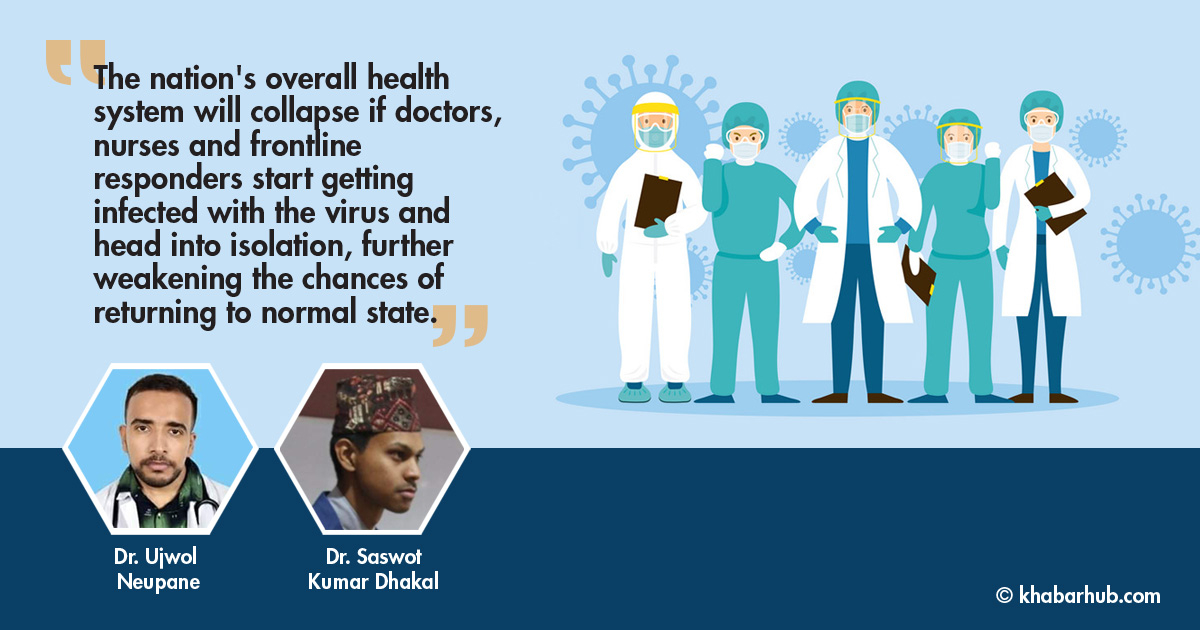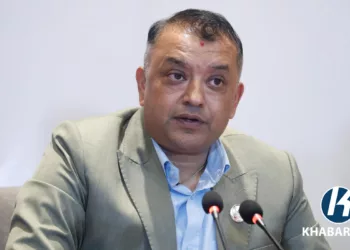The COVID-19 pandemic undoubtedly has affected the global population in all aspects — the psychosocial health aspect being the most hard-hit field.
Health care providers are particularly vulnerable to emotional distress in the current pandemic, given their risk of exposure to the virus at their workplace, concern about infecting and caring for their family members, abysmal and conflicting decisions from higher authorities, shortages of personal protective equipment (PPE), and longer hectic work hours.
A specific and uncontrolled fear related to infection, pervasive anxiety, frustration and disabling loneliness have really put up their mental resilience on an acid-test.
Previous studies have assessed the psychosocial impact of epidemics or pandemics such as SARS and found high levels of mental distress including panic attacks, and psychotic symptoms among healthcare workers.(1)
Inadequate precautionary measures in the workplace were associated with higher odds of having anxiety and depression as compared to those who had adequate precautionary measures.
Evidence also shows that in addition to the stress of high numbers of people getting sick or dying, epidemics and pandemics also cause vast economic losses which are associated with further high psychosocial risk.(2,3)
Surely, the psychosocial impact on healthcare workers of a country like Nepal was too detrimental to not keep a light upon.
A study done on Nurses of a tertiary care center of Kaski district during corona lockdown reported prevalence of depression, anxiety and stress among 39.5%, 50%, and 25.7% of the respondents respectively.(4)
Similarly, a nation-wide study confirmed some form of anxiety in 41.9% of respondents (borderline-23.6% and abnormal-18.3%); Nearly two-fifths (37.5%) had some form of depression (24 % borderline and 13.5% abnormal); among health workers, 26.7% had sub-threshold insomnia, 5.7% had moderate clinical insomnia and 1.5% had severe clinical insomnia; nearly half of the participants (46.1%) expressed high degree of COVID related fear such that the proportion of high degree of COVID related fear was 63.5% among nurses, 39.7% among other health workers and 34% among doctors.
Also, the very same study showed that nearly half of the health workers (49.1%) were working overtime, only 21.1% of health workers said that precautionary measures in their workplace were sufficient, clearly demonstrating overexploitation of health workers during the pandemic.
Also, more than half of health workers (53.7%) mentioned that they faced stigma due to COVID-19. One-fourth of health workers (26.7%) said they were stigmatized because of their profession, 21.5% accused of being a carrier, 3.2% threatened and 2.3% asked to leave a rented place.
The increased risk of infection and stressful environment might have contributed to higher mental health impacts among health workers in China than in Nepal.
Nurses had a higher chance of having anxiety, and COVID-related fear as compared to other health professions.
Inadequate precautionary measures in the workplace were associated with higher odds of having anxiety and depression as compared to those who had adequate precautionary measures.
COVID-related fear was positively significant among health workers working in the affected district as a comparison to those working in a non-affected district.
The presence of a family member with chronic disease was significantly associated with the presence of COVID-19 related fear.(5)
Comparing these figures to that in other countries such that in China, who faced bigger challenges as their health care facilities were overwhelmed with COVID-19 patients requiring hospitalization and intensive care, the prevalence of anxiety, depression and insomnia was found to be quite high (44.6%, 50.4% and 34.0% of health workers were reported to have anxiety, depression and insomnia respectively).
The increased risk of infection and stressful environment might have contributed to higher mental health impacts among health workers in China than in Nepal.(2,6)
Recent news of the development of COVID-19 vaccines working at above 90% efficacies has glimmered a much-needed relief among the general population, more profoundly among health care workers.
Even under normal circumstances, good mental health is crucial to the functioning of society.
During a pandemic, however, it can affect how we respond and recover. Health-care workers are essential to the COVID-19 response but may have to leave the workforce if their mental health is not protected.(7)
On May 13, 2020, the World Health Organization issued a report on the “Need for Action on Mental Health” which states “the frontline healthcare workers and first responders are exposed to numerous stresses”.
The nation’s overall health system will surely collapse if doctors, nurses and frontline responders start getting infected with the virus and head into isolation, further weakening the chances of returning to a normal state.
Therefore, it is only logical that they should be protected at any cost, and their mental health is given top priority.
However dark the tunnel might be, there has to be a light at the end of it. Recent news of the development of COVID-19 vaccines working at above 90% efficacies has glimmered a much-needed relief among the general population, more profoundly among health care workers.
Surely, the administration of vaccines will provide appropriate armor to deal with the corona virus in the long run, however, the country must be prepared for numerous mental health threats associated with the pandemic and precautionary activities should be integrated into the general pandemic health care system.
References:
- Maunder RG. Was SARS a mental health catastrophe? Gen Hosp Psychiatry [Internet]. 2009;31(4):316–7. [cited 2020 December 8]. Available from: http://dx.doi.org/10.1016/j.genhosppsych.2009.04.004
- Lai J, et al. Factors Associated With Mental Health Outcomes Among Health Care Workers Exposed to Coronavirus Disease 2019. JAMA Netw ‐ Open. 2020;3(3):1–12.
- PAHO/WHO. PROTECTING MENTAL HEALTH DURING EPIDEMICS. 2006;1:1–25.
- Silwal M, et al.“Depression, Anxiety and Stress among Nurses during Corona Lockdown in a Selected Teaching Hospital, Kaski, Nepal" . jhas [Internet]. 2020Oct.19 [cited 2020 December 8];10(2):82-7. Available from: https://www.jhas.org.np/jhas/index.php/jhas/article/view/210
- Khanal, P., et al. Mental health impacts among health workers during COVID-19 in a low resource setting: a cross-sectional survey from Nepal. Global Health 16, 89 (2020). [cited 2020 December 8]. Available from: https://doi.org/10.1186/s12992-020-00621-z
- Kang L, et al. Impact on mental health and perceptions of psychological care among medical and nursing staff in Wuhan during the 2019 novel coronavirus disease outbreak: A cross-sectional study. Brain Behav Immun. 2020;87:11–7.
- The intersection of COVID-19 and mental health [Internet] 2020 November 01 [cited 2020 December 8] Available from: https://doi.org/10.1016/S1473-3099(20)30797-0









Comment